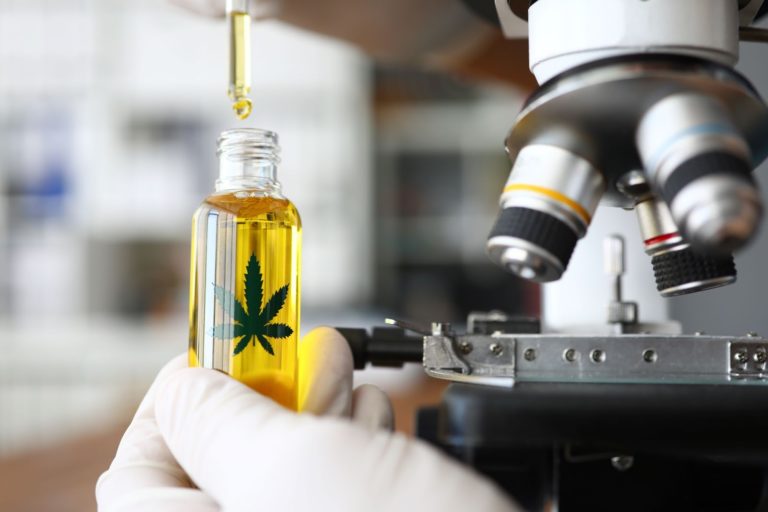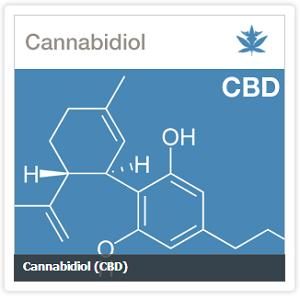 Reefer Madness Was Abundant At Kansas Medical Marijuana Hearing
Reefer Madness Was Abundant At Kansas Medical Marijuana Hearing
There was a hearing today in Kansas dealing with medical marijuana. From what news reports out of Kansas are saying, the meeting was mixed, although I encourage people from Kansas to put their perspective in the comments so that others can know the local scoop. One thing that I read that is really bothering me is the anti-medical marijuana propaganda that was spread by Eric Voth, a physician and the chairman of the Institute on Global Drug Policy. An article from the Topeka Capital-Journal stated, “Voth also said much of Oregon had to halt pre-employment drug screenings after medical marijuana because “they had no usable work force.”” Mr. Voth, you are a liar, plain and simple. I live in Oregon, I have applied for jobs in Oregon, and I can assure you that pre-employment drug screenings are considered the standard here, not the exception.
During the meeting, Kansas Representative Ed Trimmer stated the following:
“Do we have any evidence on either side from sources like the National Cancer Institute, the American Medical Association, the New England Journal of Medicine, the American Opthamological Association Journal?” Trimmer asked. “I would hope that we have something in the medical profession that tells us whether these things work or not. I like to base policy on sound research.” This is a classic response by people that are uneducated about marijuana. Long gone are the days when politicians can stick their heads in the sand and act like there is no science to back up medical marijuana. Below is ONE of MANY articles out there about the scientifically proven medical benefits of marijuana. Before anti-medical marijuana spin doctors try to spout lies and delay tactics in the future, they should really do their homework:
From NORML Website:
Gliomas/Cancer
Gliomas (tumors in the brain) are especially aggressive malignant forms of cancer, often resulting in the death of affected patients within one to two years following diagnosis. There is no cure for gliomas and most available treatments provide only minor symptomatic relief.
A review of the modern scientific literature reveals numerous preclinical studies and one pilot clinical study demonstrating cannabinoids’ ability to act as antineoplastic agents, particularly on glioma cell lines.
Writing in the September 1998 issue of the journal FEBS Letters, investigators at Madrid’s Complutense University, School of Biology, first reported that delta-9-THC induced apoptosis (programmed cell death) in glioma cells in culture.[1] Investigators followed up their initial findings in 2000, reporting that the administration of both THC and the synthetic cannabinoid agonist WIN 55,212-2 “induced a considerable regression of malignant gliomas” in animals.[2] Researchers again confirmed cannabinoids’ ability to inhibit tumor growth in animals in 2003.[3]
That same year, Italian investigators at the University of Milan, Department of Pharmacology, Chemotherapy and Toxicology, reported that the non-psychoactive cannabinoid, cannabidiol (CBD), inhibited the growth of various human glioma cell lines in vivo and in vitro in a dose dependent manner. Writing in the November 2003 issue of the Journal of Pharmacology and Experimental Therapeutics Fast Forward, researchers concluded, “Non-psychoactive CBD … produce[s] a significant anti-tumor activity both in vitro and in vivo, thus suggesting a possible application of CBD as an antineoplastic agent.”[4]
In 2004, Guzman and colleagues reported that cannabinoids inhibited glioma tumor growth in animals and in human glioblastoma multiforme (GBM) tumor samples by altering blood vessel morphology (e.g., VEGF pathways). Writing in the August 2004 issue of Cancer Research, investigators concluded, “The present laboratory and clinical findings provide a novel pharmacological target for cannabinoid-based therapies.”[5]
More recently, investigators at the California Pacific Medical Center Research Institute reported that the administration of THC on human glioblastoma multiforme cell lines decreased the proliferation of malignant cells and induced cell death more rapidly than did the administration of WIN 55,212-2. Researchers also noted that THC selectively targeted malignant cells while ignoring healthy ones in a more profound manner than the synthetic alternative.[6]
Most recently, Guzman and colleagues reported that THC administration decreases recurrent glioblastoma multiforme tumor growth in patients diagnosed with recurrent GBM. In the first ever pilot clinical trial assessing the use of cannabinoids and GBM, investigators found that the intratumoral administration of THC was associated with reduced tumor cell proliferation in two of nine subjects. “The fair safety profile of THC, together with its possible anti-proliferative action on tumor cells reported here and in other studies, may set the basis for future trials aimed at evaluating the potential antitumoral activity of cannabinoids,” investigators concluded.[7] Several additional investigators have also recently called for further exploration of cannabis-based therapies for the treatment of glioma.[8-10]
In addition to cannabinoids’ ability to moderate glioma cells, separate studies demonstrate that cannabinoids and endocannabinoids can also inhibit the proliferation of other various cancer cell lines, including breast carcinoma,[11-15] prostate carcinoma,[16-18] colorectal carcinoma,[19] gastric adenocarcinoma,[20] skin carcinoma,[21] leukemia cells,[22-23]neuroblastoma,[24] lung carcinoma,[25-26] uterus carcinoma,[27] thyroid epithelioma,[28] pancreatic adenocarcinoma,[29-30], cervical carcinoma,[31] oral cancer,[32] biliary tract cancer (cholangiocarcinoma)[33] and lymphoma.[34-35]
Studies also indicate that the administration of cannabinoids, in conjunction with conventional anti-cancer therapies, can enhance the effectiveness of standard cancer treatments.[36] Most recently, investigators at the University of California, Pacific Medical Center reported that cannabinoids possess synergistic anti-cancer properties — finding that the administration of a combination of the plant’s constituents is superior to the administration of isolated compounds alone.[37]
Consequently, many experts now believe that cannabinoids “may represent a new class of anticancer drugs that retard cancer growth, inhibit angiogenesis and the metastatic spreading of cancer cells.”[38-39]
REFERENCES
[1] Guzman et al. 1998. Delta-9-tetrahydrocannabinol induces apoptosis in C6 glioma cells. FEBS Letters 436: 6-10.
[2] Guzman et al. 2000. Anti-tumoral action of cannabinoids: involvement of sustained ceramide accumulation and extracellular signal-regulated kinase activation. Nature Medicine 6: 313-319.
[3] Guzman et al. 2003. Inhibition of tumor angiogenesis by cannabinoids. The FASEB Journal 17: 529-531.
[4] Massi et al. 2004. Antitumor effects of cannabidiol, a non-psychotropic cannabinoid, on human glioma cell lines. Journal of Pharmacology and Experimental Therapeutics Fast Forward 308: 838-845.
[5] Guzman et al. 2004. Cannabinoids inhibit the vascular endothelial growth factor pathways in gliomas (PDF).Cancer Research 64: 5617-5623.
[6] Allister et al. 2005. Cannabinoids selectively inhibit proliferation and induce death of cultured human glioblastoma multiforme cells. Journal of Neurooncology 74: 31-40.
[7] Guzman et al. 2006. A pilot clinical study of delta-9-tetrahydrocannabinol in patients with recurrent glioblastoma multiforme. British Journal of Cancer (E-pub ahead of print).
[8] Parolaro and Massi. 2008. Cannabinoids as a potential new drug therapy for the treatment of gliomas. Expert Reviews of Neurotherapeutics 8: 37-49
[9] Galanti et al. 2007. Delta9-Tetrahydrocannabinol inhibits cell cycle progression by downregulation of E2F1 in human glioblastoma multiforme cells. Acta Oncologica 12: 1-9.
[10] Calatozzolo et al. 2007. Expression of cannabinoid receptors and neurotrophins in human gliomas.Neurological Sciences 28: 304-310.
[11] Cafferal et al. 2006. Delta-9-Tetrahydrocannabinol inhibits cell cycle progression in human breast cancer cells through Cdc2 regulation. Cancer Research 66: 6615-6621.
[12] Di Marzo et al. 2006. Anti-tumor activity of plant cannabinoids with emphasis on the effect of cannabidiol on human breast carcinoma. Journal of Pharmacology and Experimental Therapeutics Fast Forward 318: 1375-1387.
[13] De Petrocellis et al. 1998. The endogenous cannabinoid anandamide inhibits human breast cancer cell proliferation. Proceedings of the National Academy of Sciences of the United States of America 95: 8375-8380.
[14] McAllister et al. 2007. Cannabidiol as a novel inhibitor of Id-1 gene expression in aggressive breast cancer cells. Molecular Cancer Therapeutics 6: 2921-2927.
[15] Cafferal et al. 2010. Cannabinoids reduce ErbB2-driven breast cancer progression through Akt inhibition.Molecular Cancer 9: 196.
[16] Sarfaraz et al. 2005. Cannabinoid receptors as a novel target for the treatment of prostate cancer. Cancer Research 65: 1635-1641.
[17] Mimeault et al. 2003. Anti-proliferative and apoptotic effects of anandamide in human prostatic cancer cell lines. Prostate 56: 1-12.
[18] Ruiz et al. 1999. Delta-9-tetrahydrocannabinol induces apoptosis in human prostate PC-3 cells via a receptor-independent mechanism. FEBS Letters 458: 400-404.
[19] Pastos et al. 2005. The endogenous cannabinoid, anandamide, induces cell death in colorectal carcinoma cells: a possible role for cyclooxygenase-2. Gut 54: 1741-1750.
[20] Di Marzo et al. 2006. op. cit
[21] Casanova et al. Inhibition of skin tumor growth and angiogenesis in vivo by activation of cannabinoid receptors. 2003. Journal of Clinical Investigation 111: 43-50.
[22] Powles et al. 2005. Cannabis-induced cytotoxicity in leukemic cell lines. Blood 105: 1214-1221
[23] Jia et al 2006. Delta-9-tetrahydrocannabinol-induced apoptosis in Jurkat leukemic T cells in regulated by translocation of Bad to mitochondria. Molecular Cancer Research 4: 549-562.
[24] Manuel Guzman. 2003. Cannabinoids: potential anticancer agents (PDF). Nature Reviews Cancer 3: 745-755.
[25] Ibid.
[26] Preet et al. 2008. Delta9-Tetrahydrocannabinol inhibits epithelial growth factor-induced lung cancer cell migration in vitro as well as its growth and metastasis in vivo. Oncogene 10: 339-346.
[27] Manuel Guzman. 2003. Cannabinoids: potential anticancer agents (PDF). Nature Reviews Cancer 3: 745-755.
[28] Baek et al. 1998. Antitumor activity of cannabigerol against human oral epitheloid carcinoma cells. Archives of Pharmacal Research: 21: 353-356.
[29] Carracedo et al. 2006. Cannabinoids induce apoptosis of pancreatic tumor cells via endoplasmic reticulum stress-related genes. Cancer Research 66: 6748-6755.
[30] Michalski et al. 2008. Cannabinoids in pancreatic cancer: correlation with survival and pain. International Journal of Cancer 122: 742-750.
[31] Ramer and Hinz. 2008. Inhibition of cancer cell invasion by cannabinoids via increased cell expression of tissue inhibitor of matrix metalloproteinases-1. Journal of the National Cancer Institute 100: 59-69.
[32] Whyte et al. 2010. Cannabinoids inhibit cellular respiration of human oral cancer cells. Pharmacology 85: 328-335.
[33] Leelawat et al. 2010. The dual effects of delta(9)-tetrahydrocannabinol on cholangiocarcinoma cells: anti-invasion activity at low concentration and apoptosis induction at high concentration. Cancer Investigation 28: 357-363.
[34] Gustafsson et al. 2006. Cannabinoid receptor-mediated apoptosis induced by R(+)-methanandamide and Win55,212 is associated with ceramide accumulation and p38 activation in mantle cell lymphoma. Molecular Pharmacology 70: 1612-1620.
[35] Gustafsson et al. 2008. Expression of cannabinoid receptors type 1 and type 2 in non-Hodgkin lymphoma: Growth inhibition by receptor activation. International Journal of Cancer 123: 1025-1033.
[36] Liu et al. 2008. Enhancing the in vitro cytotoxic activity of Ä9-tetrahydrocannabinol in leukemic cells through a combinatorial approach. Leukemia and Lymphoma 49: 1800-1809.
[37] Marcu et al. 2010. Cannabidiol enhances the inhibitory effects of delta9-tetrahydrocannabinol on human glioblastoma cell proliferation and survival. Molecular Cancer Therapeutics 9: 180-189.
[38] Natalya Kogan. 2005. Cannabinoids and cancer. Mini-Reviews in Medicinal Chemistry 5: 941-952.
[39] Sarafaraz et al. 2008. Cannabinoids for cancer treatment: progress and promise. Cancer Research 68: 339-342.









